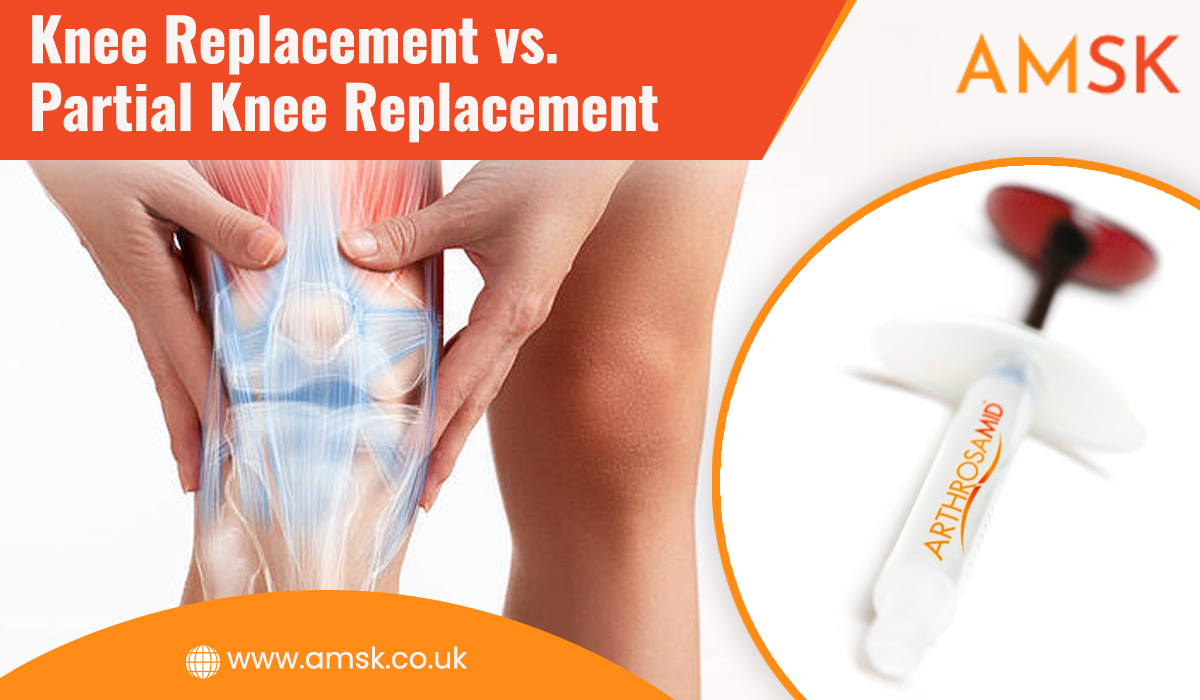If you are experiencing pain in your knees, you may be wondering if you need a total knee replacement or a partial knee replacement. The answer to this question depends on a number of factors, including the severity of your pain, the extent of your knee damage, and your overall health.
You should always consult with a qualified physician to get their professional advice on which type of knee replacement is right for you. They will be able to take into account all of the relevant factors and make a recommendation based on your case.
In this article, we will provide an overview of total knee replacement and partial knee replacement. We will also discuss the key differences between the two procedures. By the end of this article, you should have a better understanding of which type of knee replacement is right for you.
What is a knee replacement?
A knee replacement is a surgical procedure in which the knee joint is replaced with an artificial implant. The goals of knee replacement surgery are to relieve pain, improve joint function, and improve quality of life.
Knee replacement surgery is usually performed to treat severe arthritis of the knee. It may also be performed to treat a knee joint that has been damaged by injury or a condition such as rheumatoid arthritis.
Knee replacement surgery may be an option for you if other treatments, such as physical therapy, medications, and weight loss, have not helped relieve your pain and improve your knee function.
During knee replacement surgery, your surgeon will remove the damaged cartilage and bone from your knee joint and replace them with an artificial joint made of metal and plastic.
Effective when the damage to the knee is more extensive, involving multiple parts of the knee
A lower chance of needing surgery long term
What is a partial knee replacement?
A partial knee replacement is a type of surgery that is used to treat damage to the knee. This damage can be caused by arthritis, injury, or other conditions. During this surgery, the surgeon will remove the damaged portion of the knee and replace it with an artificial joint. This artificial joint will help to relieve the pain and improve the function of the knee.
Partial knee replacements are a less invasive alternative to total knee replacements, and they have a shorter recovery time. This type of surgery is typically only recommended for people who have damage to one specific area of the knee.
Usually performed through a smaller incision
Less pain and shorter recovery
If you are experiencing knee pain, it is important to visit a professional to determine the best course of treatment. Total knee replacement may be necessary if the pain is severe and/or if the knee is damaged beyond repair. Partial knee replacement may be an option if the damage is limited to one area of the knee. The decision of which procedure to undergo should be made after careful consideration and consultation with a medical professional.
With a team of expert arthritis specialists, we provide our patients a new knee replacement technology in the form of injections, naming Arthrosamid to treat Knee Injuries, Osteoarthritis, etc. It shows excellent results in reducing the knee pain gradually. For further discussion on the Arthrosamid cost and process, get in touch with us today.




